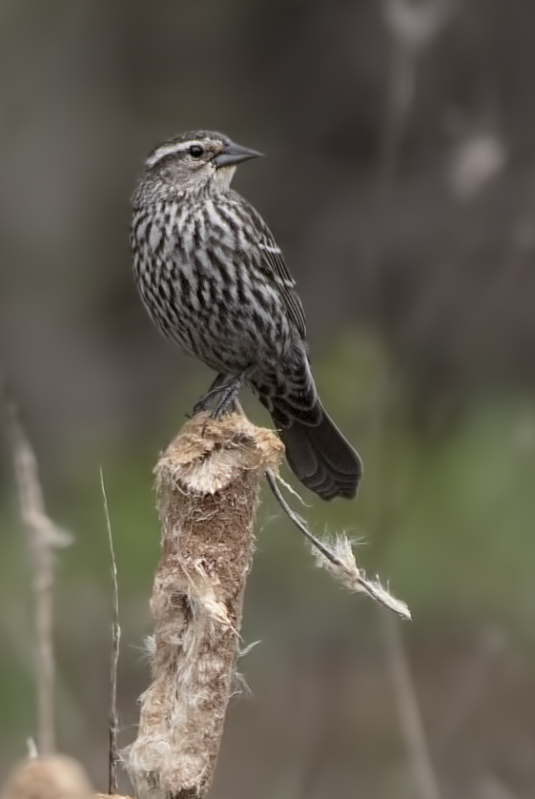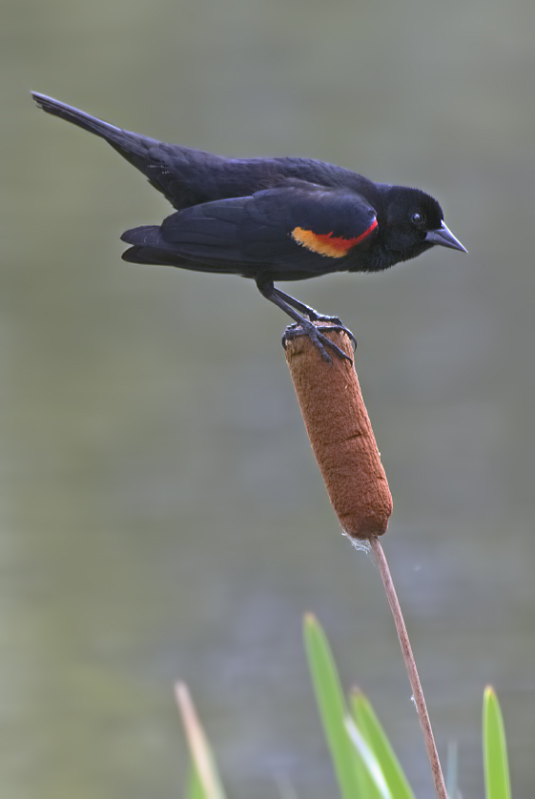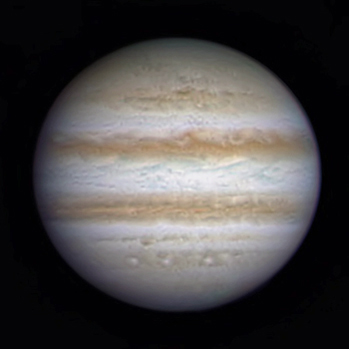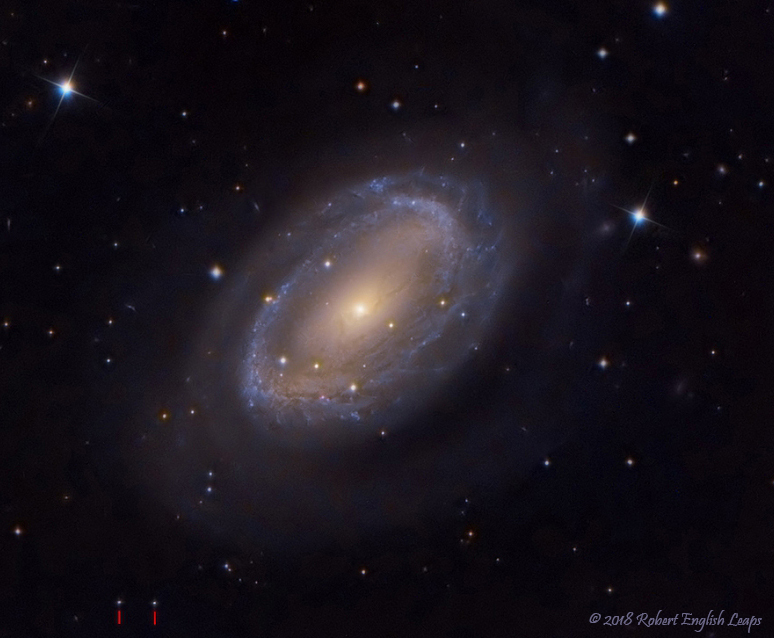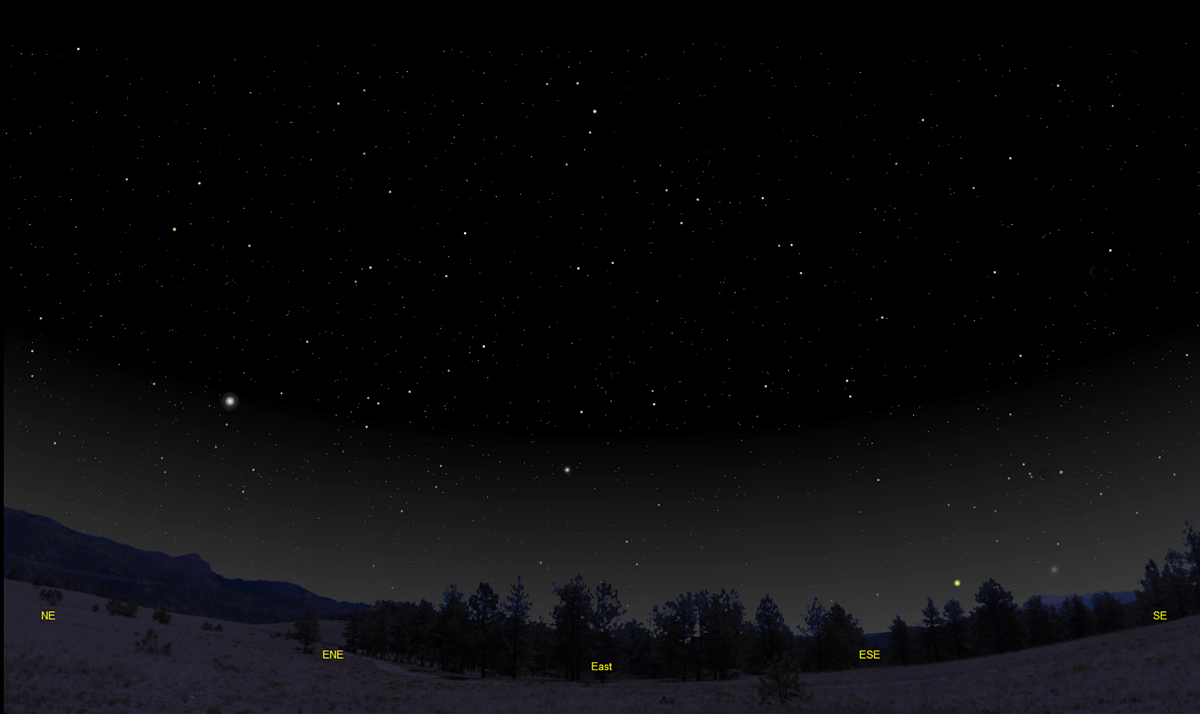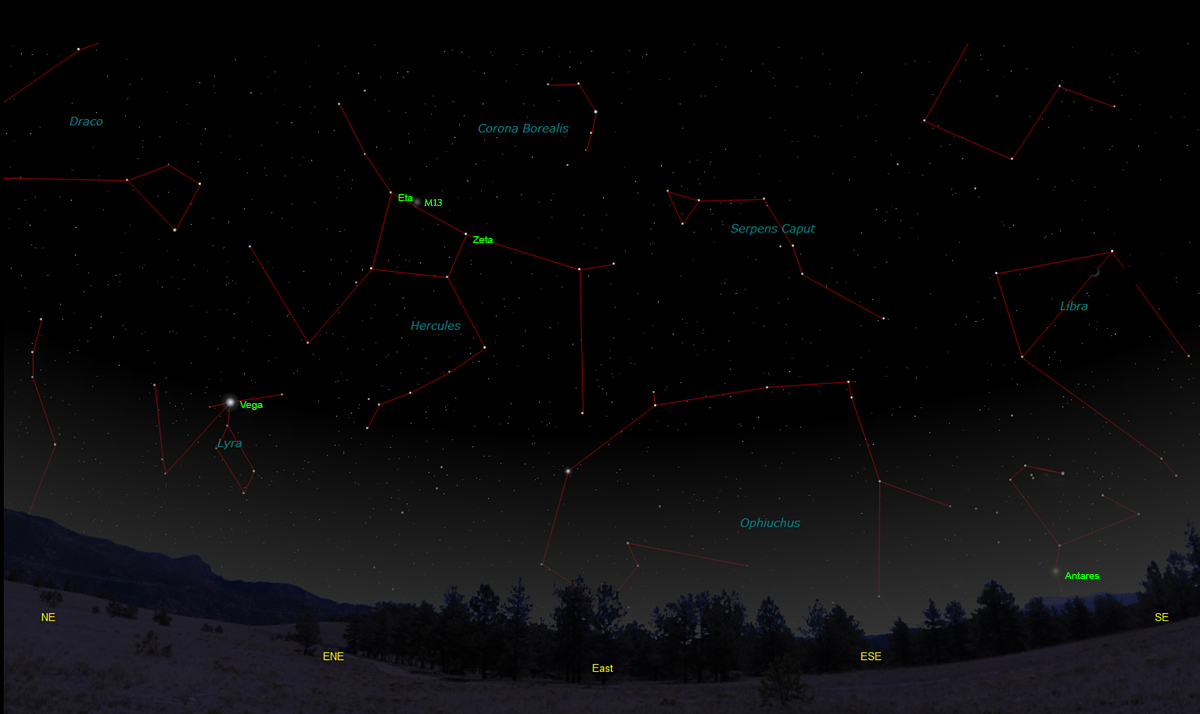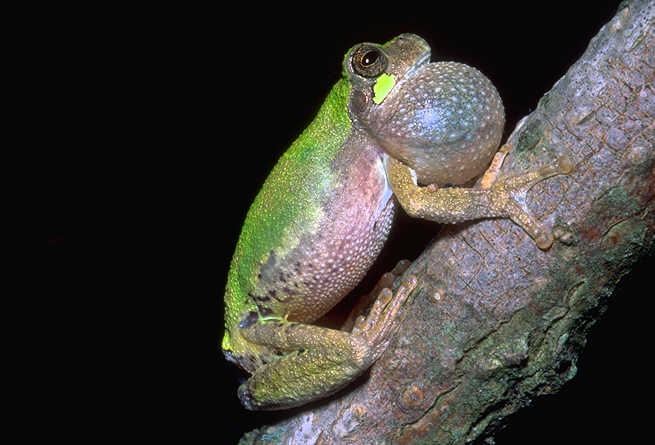The purpose of this feature is to give scout leaders, educators and naturalists an idea of some of the natural events coming up each month. We will try to cover a variety of natural events ranging from sky events to calling periods of amphibians, bird and mammal watching tips, prominent wildflowers and anything else that comes to mind. We will also note prominent constellations appearing over the eastern horizon at mid-evening each month for our area for those who would like to learn the constellations. If you have suggestions for other types of natural information you would like to see added to this calendar, let us know! Note: You can click on the hyperlinks to learn more about some of the featured items. To return to the Calendar, hit the "back" button on your browser, NOT the "back" button on the web page. All charts are available in a "printer friendly" mode, with black stars on a white background. Left clicking on each chart will take you to a printable black and white image. Though we link book references to nationwide sources, we encourage you to support your local book store whenever possible.
Notes From April 2019
In April I spent quite a bit of time rebuilding and repairing the observatory that I moved from Franklin, Tennessee. I poured the concrete foundation for the pier in November, but only disassembled and moved the obervatory last month. The long days outside were hard work, but I got to see a lot of natural world in that time. I've recorded ten species of frogs and toads so far this year around the house and pond, and expect to record several more. Black-and-white Warblers were common in the woods near the observatory, and Common Yellowthroats called from the wet areas of the field. I had a pair of Barred Owls that called every afternoon. On April 28th I was driving back around the pond towards the house when I saw 5 tiny ducklings crossing the road in single file in front of me. I guessed that their mother had already crossed. When they saw my car, the ducklings reversed course and exited back down the pond bank, all single file. I crept by them and, looking back, saw the mother Wood Duck fly back to join them. A pair of Red-winged Blackbirds nested in the cattails on the south side of the pond. I took the images below on April 14th.
On April 18th I took a hike in the Smokies. The trail was a bit of a challenge, as it started low at the Kephart Prong trailhead and climbed up to Charlie's Bunion. The total cumulative elevation gain was 3,278 feet, and the total out-and-back mileage was 12.6 miles.
The Kephart Prong Trail crosses over the Kephart Prong of the Oconoluftee River several times. I managed to drop my cell phone directly into the rapids at one of the crossings, and though I waded in after it, couldn't locate it. Wildflowers were abundant along the trails. The lower trails were bordered with White Trillium and Painted Trillium. Along the upper reaches of the Grassy Branch trail large areas along the trail were carpeted with Spring Beauties and Yellow Trout Lilies. Boott's Sedge, Carex picta, was also flowering. The trails passed through territory after territory of Black-throated Green Warblers and Black-throated Blue Warblers. Also heard were Winter Wren, Brown Creeper and Red-breasted Nuthatch.
Sky Events for May 2019: The Eta Aquarid Meteor Shower peaks in the morning hours of May 5th. The Moon will not interfere with the shower this year.
Morning Sky:
Evening Sky: Mars is in Taurus this month. Look for it low in the western sky in the early evening. About midmonth it crosses into Gemini. Its apparent diameter is only about 4.2 seconds of an arc, so very little detail can be made out in a telescope. Jupiter is in Ophiuchus this month, and rises around 11:30pm EDT. The great planet is almost 44 seconds of an arc in apparent diameter, heading towards opposition on June 10th.
A sure sign that spring is here is the rising of the bright blue-white star Vega in the early evening. Vega is the brightest star in Lyra, the Lyre, and it shines like a diamond in a small telescope. As spring progresses and Hercules rises higher in the sky, look for the globular cluster Messier 13 (M13), which appears like a small fuzzy patch of light about 1/3 of the distance from Eta to Zeta Hercules (see illustration below). A cluster of stars about 21,000 light years away, M13 can be made out with the naked eye in a dark country sky when the constellation is high in the sky. Binoculars will help pick it out. The great Virgo cluster of galaxies is in a favorable position now, including NGC 4725 pictured above. On Learning the Constellations: We advise learning a few constellations each month, and then following them through the seasons. Once you associate a particular constellation coming over the eastern horizon at a certain time of year, you may start thinking about it like an old friend, looking forward to its arrival each season. The stars in the evening scene above, for instance, will always be in the same place relative to the horizon at the same time and date each May. Of course, the planets do move slowly through the constellations, but with practice you will learn to identify them from their appearance. In particular, learn the brightest stars (Like Vega and Antares in the above scene looking east), for they will guide you to the fainter stars. Once you can locate the more prominent constellations, you can "branch out" to other constellations around them. It may take you a little while to get a sense of scale, to translate what you see on the computer screen or what you see on the page of a book to what you see in the sky. Look for patterns, like the stars that make up the constellation Hercules.The earth's rotation causes the constellations to appear to move across the sky just as the sun and the moon appear to do. If you go outside earlier than the time shown on the charts, the constellations will be lower to the eastern horizon. If you observe later, they will have climbed higher. As each season progresses, the earth's motion around the sun causes the constellations to appear a little farther towards the west each night for any given time of night. If you want to see where the constellations in the above figures will be on June 15th at 10:15pm EDT, you can stay up till 12:15am EDT on May 16th and get a preview. The westward motion of the constellations is equivalent to two hours per month. Recommended: Sky & Telescope's Pocket Star Atlas is beautiful, compact star atlas. A good book to learn the constellations is Patterns in the Sky, by Hewitt-White. You may also want to check out at H. A. Rey's classic, The Stars, A New Way to See Them. For sky watching tips, an inexpensive good guide is Secrets of Stargazing, by Becky Ramotowski.
A good general reference book on astronomy is the Peterson
Field Guide,
A Field Guide to the Stars and Planets, by Pasachoff. The book retails for around $14.00.
The Virtual Moon Atlas is a terrific way to learn the surface features of the Moon. And it's free software. You can download the Virtual Moon Atlas here. Apps: We really love the Sky Safari 6 Pro. It is available for both iOS and Android operating systems. There are three versions. The Pro is simply the best astronomy app we've ever seen. The description of the Pro version reads, "includes over 100 million stars, 3 million galaxies down to 18th magnitude, and 750,000 solar system objects; including every comet and asteroid ever discovered." A nother great app is the Photographer's Ephemeris. Great for finding sunrise, moonrise, sunset and moonset times and the precise place on the horizon that the event will occur. Invaluable not only for planning photographs, but also nice to plan an outing to watch the full moon rise. Available for both androids and iOS.Amphibians:
Recommended: The Frogs and Toads of North America, Lang Elliott, Houghton Mifflin Co. Archives (Remember to use the back button on your browser, NOT the back button on the web page!) Natural Calendar February 2019 Natural Calendar December 2018 Natural Calendar November 2018 Natural Calendar February 2018 Natural Calendar December 2017 Natural Calendar November 2017 Natural Calendar October 2017Natural Calendar September 2017 Natural Calendar February 2017 Natural Calendar December 2016 Natural Calendar November 2016 Natural Calendar September 2016Natural Calendar February 2016 Natural Calendar December 2015 Natural Calendar November 2015 Natural Calendar September 2015 Natural Calendar November 2014 Natural Calendar September 2014 Natural Calendar September 2013 Natural Calendar December 2012 Natural Calendar November 2012 Natural Calendar September 2012 Natural Calendar February 2012 Natural Calendar December 2011 Natural Calendar November 2011 Natural Calendar September 2011 Natural Calendar December 2010 Natural Calendar November 2010 Natural Calendar September 2010 Natural Calendar February 2010 Natural Calendar December 2009 Natural Calendar November 2009 Natural Calendar September 2009 Natural Calendar February 2009 Natural Calendar December 2008 Natural Calendar November 2008 Natural Calendar September 2008 Natural Calendar February 2008 Natural Calendar December 2007 Natural Calendar November 2007 Natural Calendar September 2007 Natural Calendar February 2007 Natural Calendar December 2006 Natural Calendar November 2006 Natural Calendar September 2006 Natural Calendar February 2006
Natural Calendar December 2005
Natural Calendar November 2005
Natural Calendar September 2005
Natural Calendar February 2005
Natural Calendar December 2004
Natural Calendar November 2004
Natural Calendar September 2004
Natural Calendar February 2004
Natural Calendar December 2003
Natural Calendar November 2003 Natural Calendar February 2003 Natural Calendar December 2002 Natural Calendar November 2002 Nature Notes Archives: Nature Notes was a page we published in 2001 and 2002 containing our observations about everything from the northern lights display of November 2001 to frog and salamander egg masses. Night scenes prepared with The Sky Professional from Software Bisque All images and recordings © 2019 Leaps
|
| |||||||||||||||||||||||
